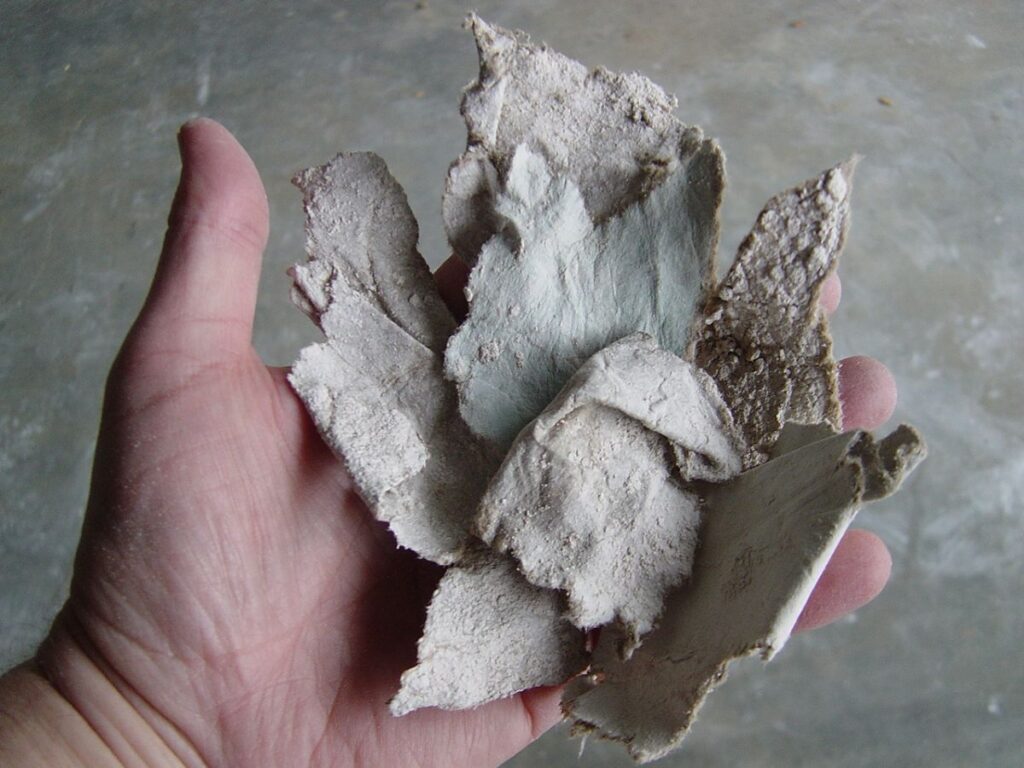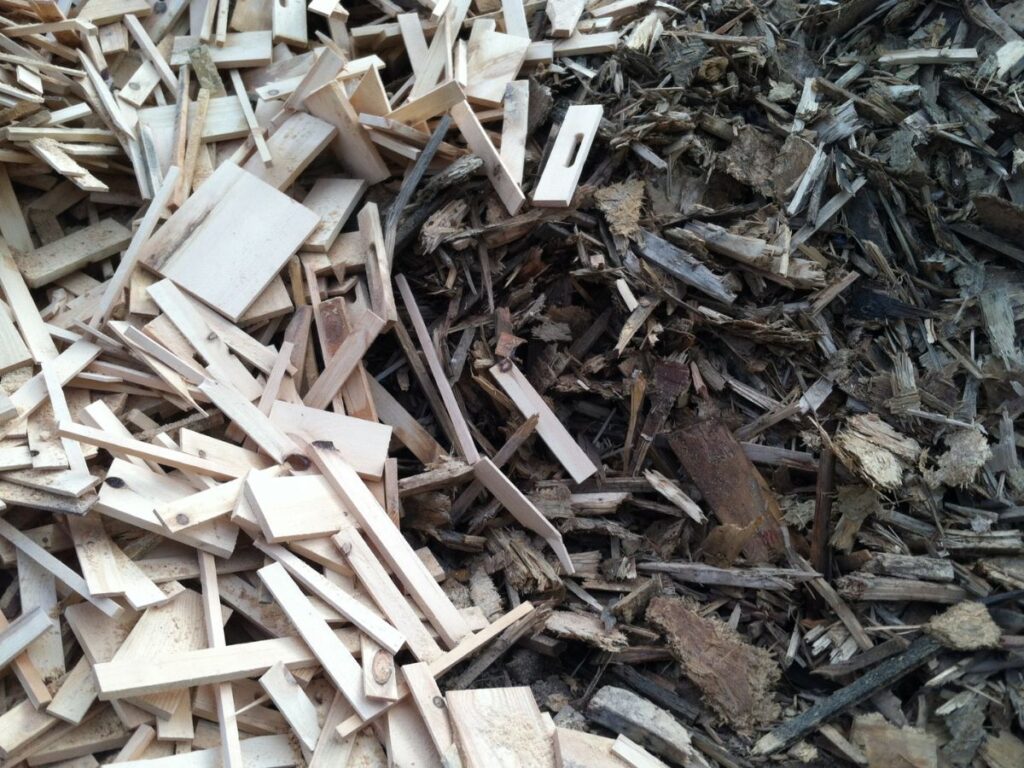In the Near East (Morocco), straw is the conventional poultry litter. Recent drought conditions, however, have depleted supplies, forcing growers to pay more and settle for less — or find alternatives. This story is repeated in many regions: the conventional bedding materials and the cause of the shortage may vary, but the race is on for finding suitable alternatives.
A further impetus to trials involving litter materials is the challenge growers face each day: the perception, whether imagined or real, that they must do more to help meet state and regionally mandated reductions in the total volume of wastes stemming from human activities (rural and urban). These goals are generally 25 to 40 percent of the total volume produced at the time the goal was set. Particular goals depend on the overall status of resources in the watershed.
The search for alternative litter supplies has environmental consequences on both counts. First, used litter constitutes a large part of the material that each grower must land apply, compost, convert to energy, or otherwise dispose of or recycle. Second, the choice of litter materials may have unexpected benefits: some producers have found that using shredded paper as a litter material reduces odor and provides a nearby market for the town’s newspaper recycling program.
Straw
The Moroccan study tested alternative litter materials on cockerel performance and litter quality. The materials investigated included soft wheat straw (whole or ground), rice straw (ground), wood shavings, and rice hulls, alone and in combination. The birds’ performance, water consumption, and leg injuries or defects were measured; and the various litters were compared for moisture content, pH, temperature, overall cleanliness scores, and buildups of dust and ammonia.
Differences were noted in the litters, but they were inconclusive. However, straw-based litters had the highest moisture content, pH values, and temperatures, and they received the lowest scores when subjectively rated. Notwithstanding this finding, all materials tested, including straw, were deemed suitable bedding materials, singly or in combination with other materials.
Evaluating Alternative Materials
Fine-textured particleboard residue, a by-product of the wood manufacturing industry that usually ends up in landfills, has been proposed as a way for poultry growers to compensate for the increasing scarcity of hardwood or pine shavings in Indiana. In this case, the shortfall in conventional bedding materials may be driving the search for alternatives but the alternatives themselves — for example, sand, gypsum, particleboard, newspaper, rice and peanut hulls, ground corn cobs, cereals, and grasses — are turning up some surprising trade-offs.


Previous investigations of litter sources correlated the type of bedding with significant differences in bird performance and carcass and litter quality. Thus, the quantitative and qualitative properties in each kind of litter should be taken into consideration before litter is purchased and placed in chicken houses.
Evaluating the performance of the litter generally involves a comparison of two or more types of litter and a litter prepared from the same ingredients but combined to study the effects of using both at one time. Other management and environmental practices, for example, dietary arrangements, types of feeders and waterers, and litter removal or replacement must be handled the same way throughout the trial in all pens included in the experiment.
Parameters chosen to measure the effects, if any, of the litter on the birds’ condition and on the quality of the bedding include the birds’ weight gain, feed conversion, mortality, and water consumption; and the degree of caking, pH, ammonia nitrogen, temperature, dust, and moisture conditions in the litter. In the Moroccan trials, for example, each of the materials included in the experiment tested as “suitable” for litter, though straw got lower index values for cleanliness. No statistical differences could be found in the way these materials acted, and no correlation was observed between increased litter moisture levels and leg abnormalities.
Investigators concluded, therefore, that even litter materials that may warrant minor complaints, for example, straw, can be used as needed. They could be used as a base, for example, and top-dressed with less available but more preferred materials, such as sawdust or wood shavings. Future studies may profitably assess the litter microbiological parameters and carcass side-effects.
Litter Alternatives Tested in Indiana
Fine and coarsely textured particleboard litter trials carried out on male turkey farms in Indiana yielded good results; the particleboard containing less moisture to begin with produced a cleaner, drier product initially. It was drier and had less bacteria and mold on day zero.
The birds raised on fine particleboard had several advantages over the pine shavings and coarse particleboard, including fewer breast buttons and leg abnormalities and a 0.22 kg gain in muscle deposition, which offset a 0.16 kg reduction in market body weight (as compared to birds grown on the traditional litter).
Coarse particleboard, on the other hand, has jagged edges. The birds suffered some foot-pad dermatitis, but not to a level to cause concern. Therefore, coarse particleboard is also an acceptable litter material for use on male turkeys.
Sand
Sand is another material that shows continuing potential as an alternative bedding material. In recent trials, chicks were randomly assigned to litter treatments of either sand or pine shavings. The birds’ health and performance were compared at 50 days of age; carcass grade and yield and foot pad lesions were examined by processing 10 male and 10 female birds per pen; and bacterial counts were determined at the end of the trial by analyzing pooled litter samples taken from each pen.
No differences were found in body weights, mortality, or feed conversion in the birds; and no significant differences were found in their carcass grade or yield or foot pad lesions. Likewise, no differences were found for litter moisture or litter temperatures. Abdominal fat yields, however, were significantly lower for the birds grown on sand litter, and the sand pens also had significantly lower E. coli and aerobic plate counts than the pine shavings pens (6.09 and 7.25 CFUs/g, respectively).
New or Recycled Paper
Broiler growers in the Northwest tested virgin and recycled paper-mill waste as an alternative to fir shavings and rye grass. The results showed no difference in the birds’ four- or seven-week body weights, feed conversion rates, or mortality. However, the houses containing the short fiber pulp and paper waste litter produced less caking.
In northern Georgia, the Chestatee-Chattahoochie Resource Conservation and Development Council, in cooperation with the North Georgia Waste Management Authority and local poultry integrators, evaluated various recycled paper products as poultry bedding. The recycled paper proved to be equal to or better than the traditional wood shavings, sawdust, or rice hulls.
Coffee Bean Husks, Straw, Wood, and Paper
Kentucky tested coffee bean husks, wheat straw, wood shavings and two kinds of paper (“mixed paper and recycled hardback books” and “mostly hardbacks”). The birds showed no significant differences in body weight, feed consumption and efficiency, breast blisters, or leg abnormalities. However, the caking effect and temperature were highest in wood shavings. The litter temperature in all cases was higher than the ambient temperature.
Grasses
Research in North Carolina concluded that Bermuda grass hay is suitable as a litter material for turkey hens, especially during the brooding period. Following research and field trials at Oregon State University, poultry producers recommended that grass straw
- should be chopped to one inch or less, and
- used as a top dressing over old litter.
Producers found that chopped grass straw is a very effective litter material and the payback is quick — it’s cheaper than sawdust (possibly because it’s locally grown), although growers may need to run gas brooders longer to keep the straw dry.
Miscanthus grass has been found to be a suitable bedding material for poultry. In field and university research trials, turkeys and broilers perform just as well on the Miscanthus grass as on pine shavings. Since Miscanthus can be grown on marginal soils, it could provide an alternative bedding material produced on poultry farms on land that is typically grazed or fallow throughout the year.
The length of the grass straw is more important than the type of straw. The straw is chopped and blown directly into the house and it takes only a few minutes to spread it with a tractor rake. The straw performs best when used half and half with shavings, rice hulls, or starter litter.
An Interesting Corollary
Pending additional study, growers can use a variety of materials to substitute for or replace conventional bedding materials; thus, giving them some measure of control over failing supplies, rising prices, and factors other than supply and demand.
So what about the use of products (e.g., recycled paper, plant residues, or sawdust and chips generated in wood product manufacturing) that nobody else wants? Can we really use paper diverted from landfills, such as newspaper and old phone books?
Those who have tried it think we can. In their view, bedding made from recycled paper is cleaner than some other bedding materials. It is higher in density and absorbency, provides additional pest control, and helps control odor. In the house, its proponents suggest, it lets chicks grow in less stress; and in the field, it decomposes quickly.
At the present time, paper makes up about 38 percent of the waste stream. Using it as a bedding material presents an interesting possibility.
As poultry producers continue to research and evaluate alternative litter materials, bird performance will always be the primary criterion – with cost and availability ultimately determining the adoption of any new litter material.
References
Benabdeljelil, K. and A. Ayachi. 1996. Evaluation of Alternative Litter Materials for Poultry. Journal of Applied Poultry Research 5:203-209.
Hermes, J.C., H.S. Nakaue, and C.A. von Bargen Gould. 1996. Studies on Virgin and Recycled Pulp and Paper Mill Waste Short Fiber as an Alternative Bedding Material for Broilers. Presentation at the 85th Annual Meeting of the Poultry Science Association, Inc., July 8-12, Louisville, KY.
Hester, P.Y., D.L. Cassens, and T.A. Bryan. 1996. The Applicability of Particleboard Residue as a Litter Material for Male Turkeys. Poultry Science 76:248-255.
Montenegro, G.I., S.F. Bilgili, J.B. Hess, M.K. Eckman, and D.E. Conner. 1996. Comparison of Sand and Pine Shavings as Litter Sources for Broilers. Presentation at the 85th Annual Meeting of the Poultry Science Association, Inc., July 8-12, Louisville, KY.
Pescatore, A.J., A.H Cantor, K.Ryan, M.L. Straw, and M.J. Ford. 1996. Evaluation of Alternative Bedding Materials on Broiler Performance, Litter Quality, and Temperature. Presentation at the 17th Annual Meeting of the Southern Poultry Science Society, January 22-23, Atlanta, GA.
Smith, J.C., J.L. Grimes, and C. M. Williams. 2002. Using Chopped Bermuda Grass Hay as a Litter Material and a Microbiological Litter Treatment for Rearing Turkey Hens. Animal and Poultry Waste Management Center, North Carolina State University, Raleigh. Proceedings 2002 National Poultry Waste Management Symposium, Birmingham, AL. National Poultry Waste Management Symposium Committee.